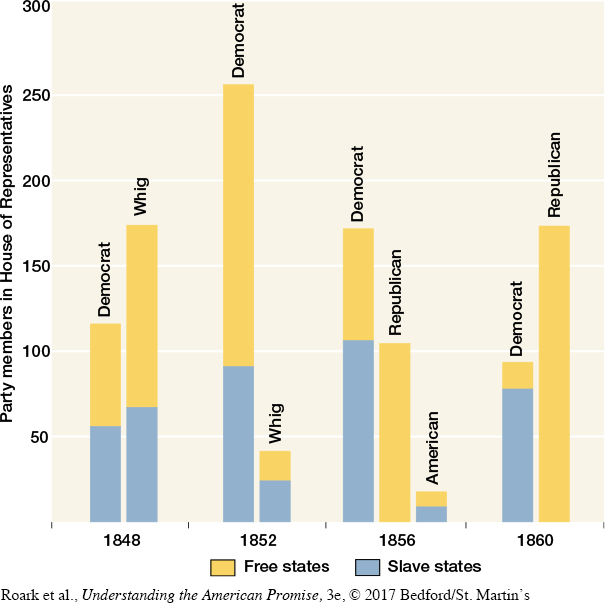Why did northern fear of the “Slave Power” intensify in the 1850s?
> CHRONOLOGY
1856
|
1857
|
1858
|
Events in Kansas Territory in the mid-1850s underscored the Republicans’ contention that the slaveholding South presented a profound threat to “free soil, free labor, and free men.” Kansas reeled with violence that Republicans argued was southern in origin. Republicans also pointed to the brutal beating by a Southerner of a respected northern senator on the floor of Congress. Even the Supreme Court, in the Republicans’ view, reflected the South’s drive toward minority rule and tyranny. Then, in 1858, the issues dividing North and South received an extraordinary hearing in a senatorial contest in Illinois, when the nation’s foremost Democrat debated a resourceful Republican (Figure 14.1). [[LP Figure: P14.01 Changing Political Landscape, 1848–1860/


Understanding the American Promise 3ePrinted Page 390